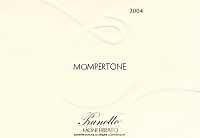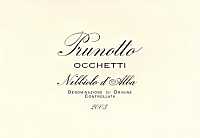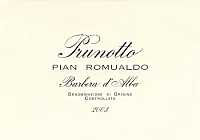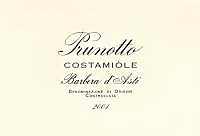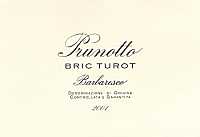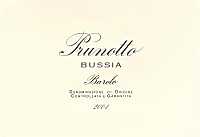|
The territory of Langhe in Piedmont indisputable represents a great land of
grapes and wines. In fact, it is enough to pronounce its name in order to recall
the powerful Nebbiolo - and therefore Barolo and Barbaresco - as well as Barbera
and Dolcetto. Despite of the fame of being a land of great red and robust wines,
in the Langhe are also found interesting white wines produced with the
autochthonous Arneis and Favorita grapes. However, red wines are the ones to
catch the attention of wine lovers. It is enough to think about the many
differences which can be expressed by Nebbiolo cultivated and vinified in Langhe
- its land - absolutely personal expressions of a territory. Barbaresco and
Barolo, for example, are both produced with Nebbiolo, nevertheless they are two
completely different wines despite the fact the two territories are only about
20 kilometers apart. Differences which are also very evident inside the same
areas: every cru, as it is commonly known, makes a wine different from
any other else. The merit for this remarkable result are the tenacity and
obstinacy of local producers and the way of interpreting the wine in this
land. Among the protagonists in the Langhe, with no doubt, there is Prunotto
winery.
|
| 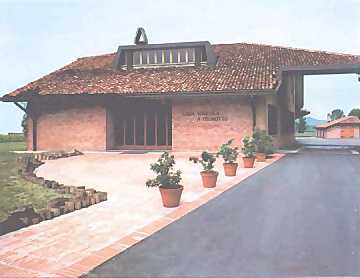 |
| Prunotto winery |
|
The story of this winery begins in 1923, when Alfredo Prunotto - successful wine
maker of the most prestigious wineries of those times - acquires the cooperative
winery “Ai Vini delle Langhe”, founded at Alba in 1904. Among the founders of
this cooperative winery, there was also Alfredo Prunotto, at those times very
young but with very clear ideas. In 1922, when the reconstitution of the
cooperative winery was about to expire, many partners, despite the year was
excellent, decided to not provide their grapes anymore, therefore causing
serious problems to the cooperative winery which was about to be closed. Alfredo
Prunotto acquired the cooperative winery “Ai Vini delle Langhe” in 1923 and
changed its name with his own. Thanks to the passion of Alfredo and his wife,
Prunotto winery soon became one of the most affirmed wine businesses of Langhe,
exporting its wines all over the world. After a long period of activity and of
commitment to enology and wine, in 1956 Alfredo Prunotto retired from his
activity.
Prunotto winery becomes then property of the friend and wine maker Beppe Colla
who, thanks to the help of Carlo Filiberti first and then of his brother Tino
Colla, ensured continuity with the same passion and commitment. Prunotto winery
did not have its own vineyards, it selected and vinified the best grapes coming
from the vineyards of the Langhe, Alba and Monferrato, property of
viticulturists with whom existed - and continue to exist - decennial
relationships of cooperation based on the same productive vision and philosophy.
In 1972, Prunotto winery expands its business and moves to San Cassiano, in the
outskirts of Alba, where it is still found the headquarter of the winery. In
1989, Tuscan firm Antinori acquires the Prunotto winery, and begins to take care
of the distribution of the wines. In 1990, Antinori acquires 7 hectares of
vineyards in the famous cru Bussia, one of the most renowned areas in the Barolo
production area. In 1995 they acquire 27 hectares of vineyards in the area of
Agliano, where it is found the renowned Costamiole vineyard, famous for Barbera
and with the clear aim of starting the production of wines with this grape.
|
 | |
| The famous Bussia vineyard at Monforte
d'Alba | |
|
In 1995, when brothers Colla decided to retire from the winery, Antinori takes
full control over the production while keeping the excellent quality level
started by Alfredo Prunotto and for which he dedicated his activity. It will be
Albiera Antinori, the first-born of Marquis Piero Antinori, to delineate the
personality of Prunotto winery, by dedicating particular attention and
commitment. The expansion of the estate continues in 1997 with the acquisition
of two new vineyards, one of 5 hectares in the Barbaresco area - “Bric Turot”
- and other 5 hectares in the Treiso area which will be destined to the
cultivation of Muscat Blanc. With these new acquisitions, Prunotto winery
defines the management and the strict control of every production phase, from
vineyard to bottling. Today, Prunotto winery represents one of the most
important wine businesses in the Langhe, with a production based on the most
important grapes and viticultural areas, from Barolo to Barbaresco, from Moscato
d'Asti to Barbera.
The yearly production of Prunotto winery is about 800,000 bottles, mostly reds
and, in lesser part, Muscat Blanc and Arneis, as well as grappa obtained by the
pomace of Muscat Blanc, Barolo Bussia and Ansolà. The production of Prunotto
winery is based on quality criteria which begin with the selection of grapes, a
scrupulous vinification and the continuous experimentation of new techniques,
including the continuous system of pumpover and the vinification in cask
barrels. The phases of aging in wood play a very important role in the
production of Prunotto's wines. The winery is in fact equipped with new 100
hectoliters casks of French oak, 5 hectoliters tonneaux and 225 liters
barriques, in order to have the most appropriate volumes and aging techniques
according to each grape variety. Thanks to the availability of many types of
casks, at Prunotto winery there is no predefined procedure for the aging of
wines.
Aging times and types of casks to be used are decided every year according to
each variety of wines and of grapes, as well as the quality of every vintage.
Also the phases of aging in bottle are scrupulously controlled. At Prunotto the
wine is allowed to age in the bottle for the longest time possible, in order to
release it on the market when can be ensured the best aging and quality
conditions for every single type of wine. Today Prunotto winery owns vineyards
in the best areas, the production facility was expanded in 2000 and equipped
with the most modern technologies in order to ensure the best quality for wines.
The quality of Prunotto's wines is the result of a long experience and a vision
about the way of making wine which was developed in about one hundred years of
history. The quality which can be found in Prunotto's wines after having poured
them in a glass, is always the witness of a scrupulous wine making process, from
vineyard to bottle, which since many years continues to charm wine lovers all
over the world.
|


